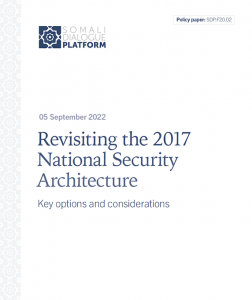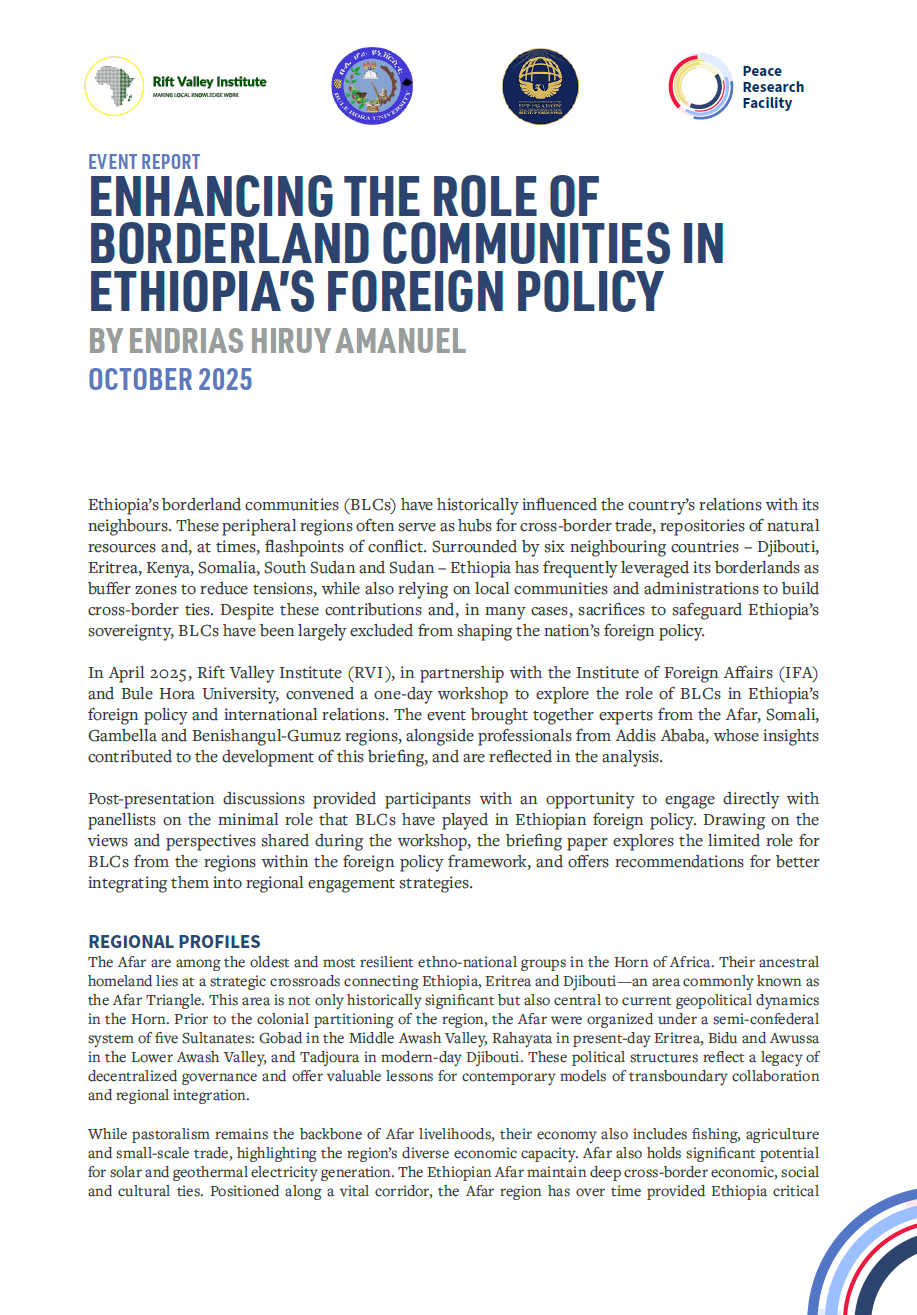Over the past decade, there have been several important gains made with Somalia’s state-building process, notably the establishment of a Federal Government following the endorsement of the Provisional Constitution in 2012. This was followed by the formation of Federal Member States (FMS) from 2013 onwards, as well as a range of significant institutional reforms. Key weaknesses remain, however, in Somalia’s overall political settlement – the underlying agreement on ‘the rules of the game’ – which have made sustaining progress increasingly challenging.
One notable weakness is the absence of a strong security settlement defining the overarching structure and division of authorities and responsibilities in the security sector within a federal framework. Some limited progress has been made, most notably with the preliminary agreement in early 2017 between Federal and Federal Member State (FMS) leaders on a National Security Architecture (NSArch). This went some way to clarify issues such as the size and distribution of security forces and the command and control structures within and between them. The process for preparing the NSArch was, however, criticized for lacking Somali ownership and space for meaningful negotiation to build buy-in. Following attempts by the newly established Federal Administration to re-centralize authority in elements of the NSArch in mid-2017, the framework was largely abandoned. Instead, greater reference was made by the Federal Administration to a Somali Transition Plan (STP). The STP offered an ambitious operational strategy for the defeat of Al-Shabaab and the recapture of territory but did not provide an alternative framework for addressing the more fundamental elements of the security settlement.
In support of informed and effective dialogue around this issue, this paper provides an analysis of the contentious issues in the NSArch that need to be addressed to establish consensus in the security settlement, offering some possible solutions to these issues. The product has been developed in consultation with a range of technical experts and political influencers as part of the Platform’s “F20” initiative, which has been designed to collaboratively explore solutions to contentious issues in Somalia’s political settlement. The options presented in this paper are not intended to be exhaustive, finite, or mutually exclusive, and are intended primarily as a starting point for dialogue and negotiation. It is accompanied by a series of other options papers on other contentious aspects of Somalia’s political settlement, including the distribution of powers and the status of Mogadishu.




